Korean email etiquette requires proper introductions and acknowledgement of the recipient’s position and title.
This guide will show you exactly how to write an email in Korean.
It covers both formal and casual levels of speech with a template at the end.
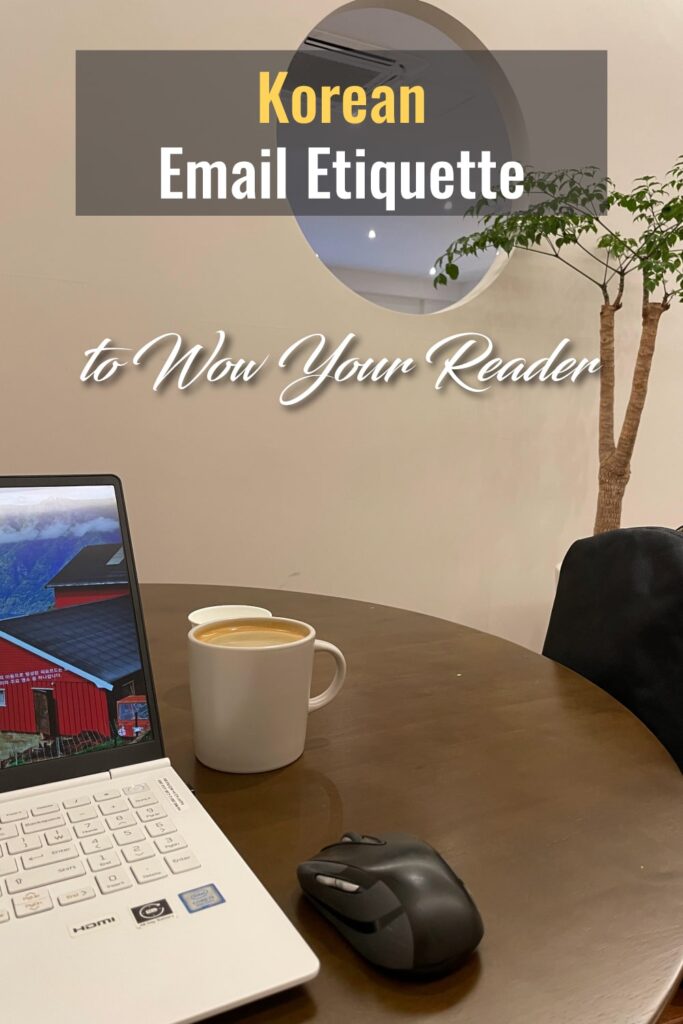
Quick Notes
- Writing a Korean email can be intimidating at first.
- There are many unwritten rules, including ways to write casual and business emails.
- Even though Korean business culture is a bit formal, you might encounter some interesting email addresses.
- It’s not uncommon to see ones like “skyblue23”, or “duckdream84”. Don’t read too much into them. They don’t usually mean what you think they do.
- Emoticons like ^^ or 🙂 are sometimes used in emails.
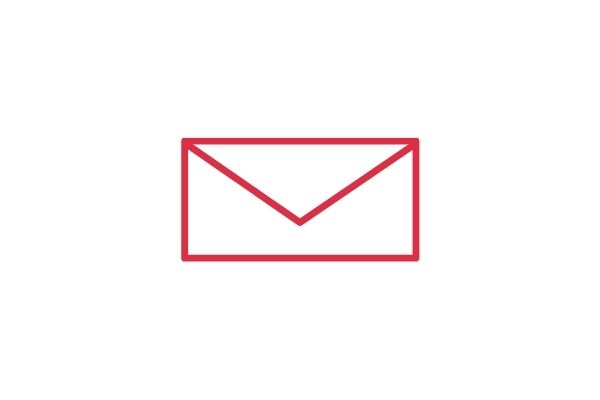

Useful terms
- 보내는 사람 or 발신자 – Sender
- 받는 사람 or 수신자 – Receiver/Recipient
- 참조 – CC
- 숨은 참조 – BCC
- 제목 – Subject
- 파일첨부 – Email attachment
- 미리보기 – Preview
- 회신 – Reply
- 전달 – Forward
- 보내기 – Send


Step 1. Relax
The recipient will know you aren’t Korean (your name will give it away), so you’ll get a lot of leeway.
We’ll cover the entire email writing process, but don’t feel bad if you miss something. They’ll understand.
Step 2. Who are they to you
What’s your relationship to the person?
A business, client, or work relationship requires more formality.
A friend, significant other or family member will allow for a more casual tone. (Koreans don’t really email each other unless it’s for work. They use KakaoTalk messenger for personal use.)
More about Korean Texting Etiquette
This is important to figure out in the very beginning, because it will decide which level of speech to use in the entire email.
Step 3. Be upfront
Koreans tend to screen emails by subject.
So it’s important to state your company name and purpose in the subject.
Make sure to format it properly, so it looks important and gets read.
[Your Company Name] Purpose of Email의 건
Step 4. Titles matter
Addressing Korean names in an email must be done correctly. Find out the recipient’s title and write 안녕하세요 (annyeonghaseyo or hello) in the first line of email.
Recipient’s Name + Title님 안녕하세요,
If you’re not sure of the title, use 담당자 instead.
담당자 (damdangja) means person in charge, but is used to substitute a specific title in Korean.
Recipient’s Name 담당자님 안녕하세요,
If you want to skip mentioning the recipient’s name, especially in the first email, you can simply say 안녕하세요, in the beginning.
안녕하세요,
Step 5. Start with the end
Unlike emails in English, Korean emails start out by introducing the sender.
This is true even if you know the person.
Your Company Name + Your Name입니다.
Your Company Name + Your Team + Your Name입니다.
Step 6. What’s the point?
Mention your intention for writing the email next.
Purpose of Email을 위해 메일 드립니다. (I’m emailing to ____.)
Purpose of Email 요청드립니다. (I’d like to request _____.)
Purpose of Email 확인 부탁드립니다. (Please check ___.)
Step 7. Attachments
Like in English, it’s important to mention if you’ve attached a file.
첨부파일 확인 부탁드립니다. (Please find the attached file.)
Step 8. Be polite
If you want to be extra courteous, you can add the following in your email.
문의사항 있으시면 언제든지 연락 부탁드립니다. (Feel free to let me know if you have any questions.)
Step 9. End on a positive note
Koreans are very concerned with health and weather, so it’s a good idea to mention them at the end.
For example,
쌀쌀한 날씨에 감기 조심하세요. (Don’t catch a cold in the chilly weather.)
미세먼지 조심하세요. (Watch out for fine dust.)
즐거운 주말 보내세요. (Have a nice weekend.)
오늘도 좋은 하루 보내세요. (Have a nice day.)
즐거운 점심시간 되세요. (Enjoy your lunch.)
Step 10. Be thankful
Make sure to thank the recipient.
A simple 감사합니다. (Thank you. or Sincerely,) will do.
감사합니다.
Step 11. Sign off right
There are two ways to end your email: 드림 and 올림.
드림 means “giving” as in “from”.
It’s a bit more casual, but suitable for most interactions.
올림 means “presenting” as in “from”, but in a polite way.
It’s more formal and is best used for addressing older people in a higher position.
드림: For colleagues, clients, acquaintances
올림: For bosses, president, parents, grandparents, teachers
Your Name 드림
Korean Email Template
Recipient’s Name + Title님 안녕하세요,
Your Company Name + Your Name입니다.
Purpose of Email을 위해 메일 드립니다.
첨부파일 확인 부탁드립니다.
문의사항 있으시면 언제든지 연락 부탁드립니다.
오늘도 좋은 하루 보내세요.
감사합니다.
Your Name 드림
More about Living in South Korea as an Expat
FAQ
Which email host do Koreans use?
Naver, Daum, and Gmail are the most common for personal use in that order.
A few years ago, Gmail wasn’t an option on most government website forms.
Now it’s slowly gaining popularity.
Most companies use their own email host.
Which emoticons do Koreans use in emails?
Koreans use emoticons to make formal emails a bit softer.
^^ is a common smiley face symbol in Korea. But, it’s not used in business emails, because it looks unprofessional.
For business emails, you can use “:)” once. This is only in cases where you have some rapport with the recipient.
For example, a long term client or coworker who you’re on friendly terms with would be fine.
More about Getting a Job in South Korea
However, it’s not advisable to use emoticons in emails to your boss or managers. Decorum is very important in the Korean business environment.
How to address Korean names in an email?
If you’re on friendly terms and use 반말 in person, writing their name is fine.
For everyone else, use name + title + 님.
How to sign an email in Korean?
- To your superior or boss: Your name + 올림 or Your name + 드림
- To your colleague: Your name + 드림
- To your subordinates: Your name + 씀 or Your name + 가
- To a company or organization: Your company name + Title + Name + 올림 or 드림 [For example, OO 주식회사 사장 OOO 올림]
How to address an email to a professor or teacher in Korean?
The best way to address a professor in Korean is to use name + 교수님.
If you’re writing in English, you can use Professor/Dr.+ last name.
More about teaching in Korea
How to address an email to a Korean businessman/businesswoman?
The best way to address a businessman/businesswoman in Korean is to use name + title + 님.
If you’re writing in English, you can use Mr./Mrs.+ last name.
How to say “you are expecting an email reply” in Korean?
The most polite way is to write, 이메일로 회신 부탁드립니다.
How do you say “I will send you an email” in Korean?
The ideal way is to write, 이메일 보내드리겠습니다.
How to say “attached in email” in Korean?
The most polite way is to write, 첨부파일 확인 부탁드립니다.
How long does it take for a Korean email to reach America?
Korean internet speed is fast, so it’ll take about the same amount of time as it does within the U.S.
How to email the North Korean leader?
While the dear leader may not have a personal email address, you can try to contact him through the official North Korean government website. This site is actually blocked in South Korea.
Did we miss anything?
Korean email etiquette is easy if you understand the formula.
Always stick to it for the best results, unless you’re very comfortable with Korean.
I spent a lot of time during my first job out of university learning email etiquette.
It’s very important if you want to get ahead in Korea.
Feel free to ask questions below about anything we missed.
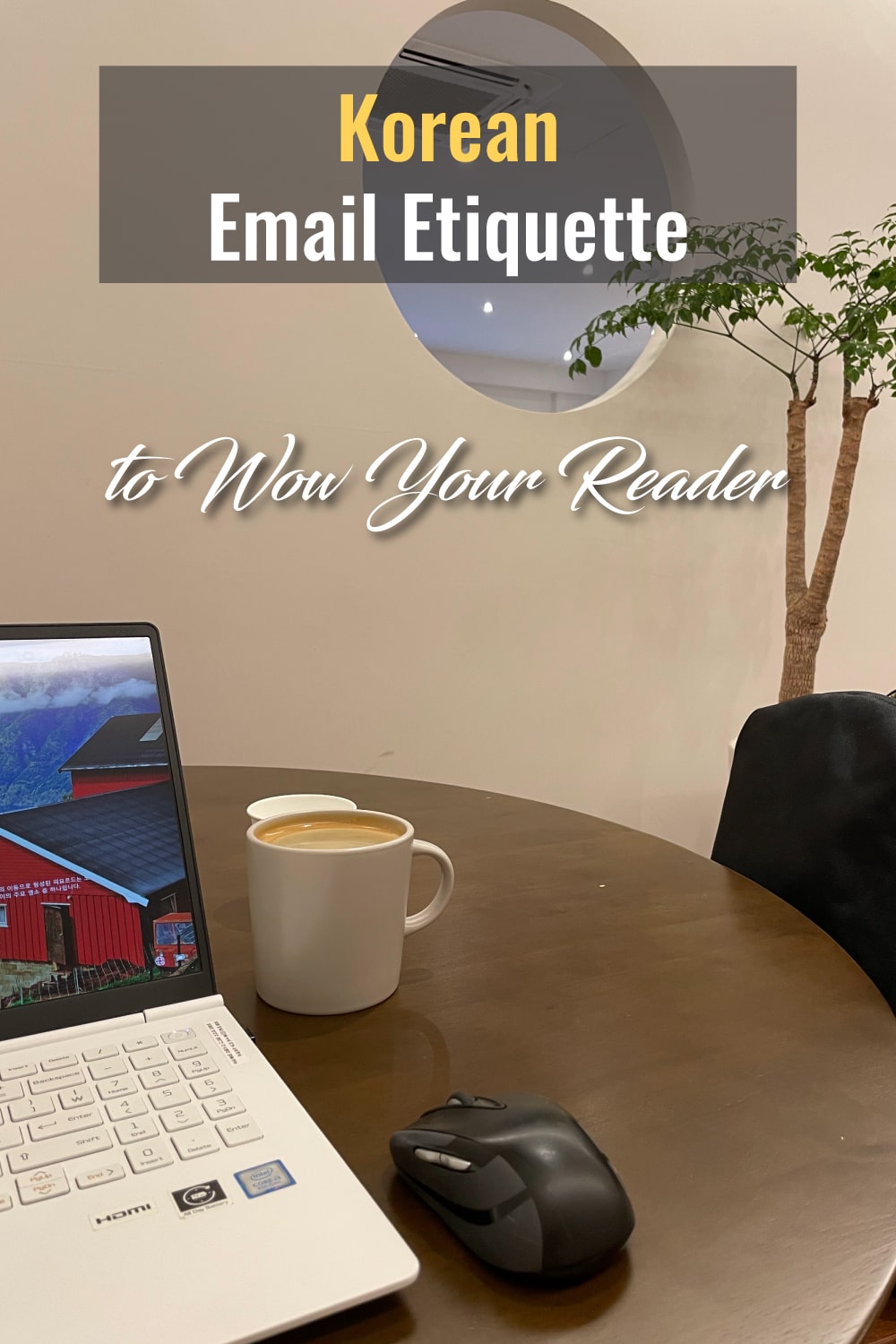
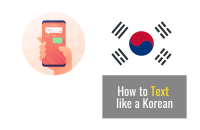
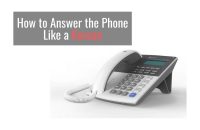
Thank you very much for this article. I found it very helpful when writing to a South Korean gallery from Australia!
My pleasure! So glad it was helpful. Let us know what other topics you’d like to see covered on our blog.
Do I say their full name preceding their title or just their surname?
Hi Hayley,
You can write the full name before the title in most cases. If you’re on very friendly terms, you can opt for just the surname or the first name plus title.
That was very helpful! But I have one more question. Can I use this formula when writing an email to a university faculty to inquire about some further information regarding their Master degree course? And is there a way to address the general faculty and staff when the given email address of the department doesn’t reveal any name in particular?
Hi Sina,
I’m glad to hear it!
If you’re directly emailing the professor, you can use “NAME 교수님”.
If you address a department staff member without a name, you can either omit that part and start with “안녕하세요,” or “담당자님 안녕하세요,”.
Let me know if you have any more questions.
Please let me know how can I be connected
Minjung, hello
I am hoping that — as a fellow journalist and communicator — you will be able to help my grandson, who is a very good ex-Watford U19 footballer, who want to play in Asia.
Leo Lawless’s most favoured countries — because their style of football and commitment to technically good football — is South Korean and Japan.
He is unusual in being both a goal-scorer and and creator of goals of many goals (known in the profession as Assists).He is currently playing in France
He has learnt so much from what you have written about composing emails. But he has run into a brick wall: several clubs do not publish their email addresses on their websites.
He doesn’t need personal emails of coaches. Just those that go into the clubs management.
Without them, all the well-crafted emails in the world are wasted, and potentially both clubs and the likes of Leo are losing out on great opportunities.
Did you know where such club-by-club email lists are available? You help would be gratefully received.
With kind regards (and please don’t get aught out in the rain)
John Lawless
Hello John,
Thank you for asking!
I couldn’t find club-by-club email lists, but K League website seems to be a good place to start.
I think your grandson can contact K League 1 clubs first (the aforementioned website has links to each club at the top). Most of them publish their phone numbers or social media accounts at the bottom, not email addresses.
Ones with emails I found are: Ulsan Hyundai Football Club (uhfc@uhfc.co.kr), Incheon United (incheonutd@incheonutd.com) and Gangwon FC (gangwonfc@gangwon-fc.com).
Best of luck to you and your grandson Leo!
thank you a lot
Minh
Hi Minh,
My pleasure! ^^